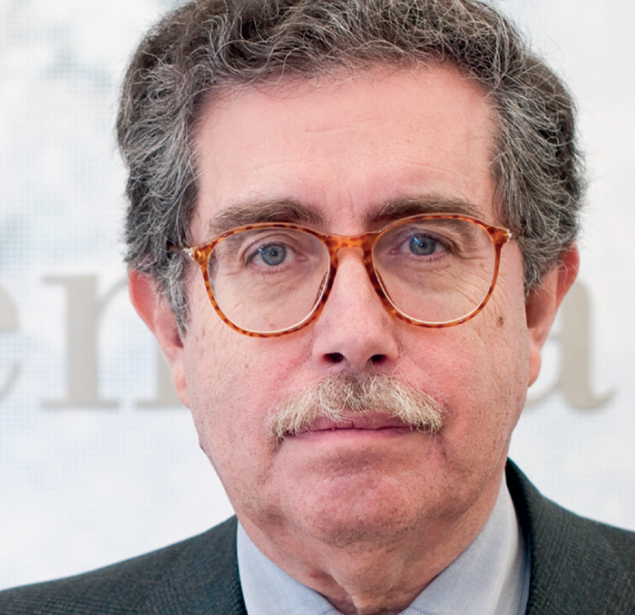On its 60th birthday, CERN should, first of all, be justly praised for its scientific results – results that stem from the organization’s unique model, which has allowed the modernization of fragmented, hierarchical and largely closed scientific and academic systems in Europe. In my view, CERN’s indirect influence on the evolution of research institutions and universities has not been sufficiently recognized yet.
As a European intergovernmental scientific organization, CERN has proved a robust and sustainable model. Its institutional framework has inspired other successful international collaboration endeavours in science and technology in Europe. CERN owes part of this success to its special way of being European, therefore becoming a model for a certain humanist idea of Europe. The organization has evolved legally to allow for wider participation, and has “implicitly” created new entities that operate as “world organizations”, such as ATLAS and CMS. In the long run, this fruitful evolution could require visionary choices at a global level: CERN must remain firmly European to be globally attractive.

Image credit: Luisa Ferreira.
CERN’s intergovernmental nature has also provided a progressive balance of collective ambition and self-interest. It allows small and large nations, including non-member states, to contribute according to their specificities and size, and to extend their contributions by investing in experiments and in technological R&D.
Building on the recognition of all of these factors is key for the future institutional evolution of CERN itself.
In this respect, CERN needs to address the challenge to intergovernmental organizations that is triggered by the incomplete EU institutional framework. Moreover, current EU financial rules are largely unspecialized, and therefore less appropriate for the specificity of research, even if much has been done to minimize these difficulties. However, intergovernmental research organizations have accumulated a vast experience in responsibly managing public funding and stimulating industrial innovation under rules appropriate to frontier science and technology. As EU budgets for research are likely to be strengthened in the future, the EU’s role in new international research ventures might be expected to increase. Contributing to the right institutional environment is, therefore, an issue that we must address.
CERN is also recognized for attracting to Europe talent, ideas and resources from the world at large. However, keeping this unique role requires aiming relentlessly at locating the heart of the world’s best research infrastructure in Europe. The issue of the location of the next generation of accelerators will, therefore, be decisive – both for CERN and for Europe.
Becoming a world leader comes with a price. Could CERN act as an incubator for a new world organization for non-accelerator particle physics, namely astroparticle physics research? The infrastructure in this field must be widely distributed, but the evaluation of priorities – as a result of joint scientific, political and technical expertise – could sit together at CERN, or at a new organization outside Europe that CERN might help to frame.
CERN is also justly recognized as a driver for networking with other fields of science and technology, as well as for new applications. We might expect Europe’s pressing social and economic needs to increasingly require research organizations to improve their direct contribution to the creation of new start-up companies, products and services, and new jobs in Europe. This should be seen as a challenge to be met.
A major opportunity seems now to be at hand. CERN’s initiative for a new R&D international open facility for the biomedical, biophysical and bioengineering communities (e.g. medical imaging and new accelerators for hadron therapy) should, in my view, be considered as an important priority for the laboratory and for its member states.
On the other hand, the societal responsibility of research is bound to increase sharply if science development in Europe progresses faster. Under economic constraints, strengthening and widening the social constituencies for science becomes more important. CERN contributes generously to formal and informal science education. I would, however, suggest that fundamental physics has not yet contributed to its full potential to the needs of general experimental science education in schools, or to the demands of modern science centres.
Finally, CERN is justly proud of having continuously pursued one of the original purposes for its creation in the aftermath of the Second World War: science for peace. Its commitment to peace has been greatly influential in the discreet and stable support for scientists and students from regions of conflict and in painful periods, as well as in more visible support to the Synchrotron-light for Experimental Science and Applications in the Middle East (SESAME) project in Jordan.
However, much more is now needed from us all. The social responsibility of scientists for peace is now desperately needed against war, oppression and misery, increased fanaticism, and against national stereotyping as an insidious prelude to blind acceptance of the inevitability of war. Let us hope that science continues to make bridges for peace.







